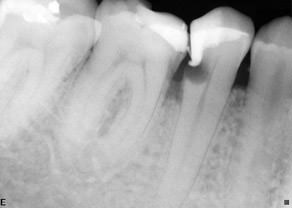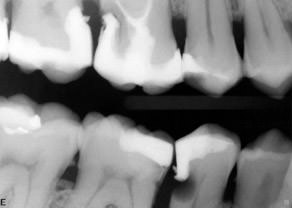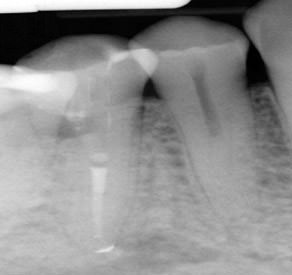This case is a good example of what I do on a daily basis. The tooth in question is a lower premolar which has suffered extensive decay but is currently not causing any pain. (It should always be remembered by dentists and patients alike that tooth aches is a hopeless early warning system and almost always comes too late. The absence of pain does not = the absence of problems!)
As with every case such as this we have an extensive discussion regarding treatment options which on this occasion would range from trying to restore the tooth through to removing it and either accepting the gap or have a denture, bridge or implant retained crown. When discussing restorative options the phrase I use most is “delay the loss of the tooth for as long as possible”. I am not keen on the phrase “saving the tooth” as this can be seen to imply that it is a once only treatment that then keeps the tooth for life: this is rarely the case. There are never any guarantees in this sort of work only varying degrees of predictability. The predictability of this case is highly dependent on the patients ability to control their decay in the future. It is inevitable that the tooth will be lost at some stage in the future but if we can delay this by several years then this delays all the other treatment options. Dentistry is a one way street so we need to walk our patients down it as slowly as possible!
The technique I used here is a root canal filling and a fibre reinforced direct restoration. I used the SAF system to clean the canal as it was a very wide oval shape that does not lend it self to cleaning with conventional rotary instruments. I then used the everStick posts from StickTech which are placed directly and adapted to the shape of the canal. It is the case of the “Self Adapting File” meets the “Self Adapting Post”
This is a single visit procedure and one that is completed without any discomfort for the patient.



